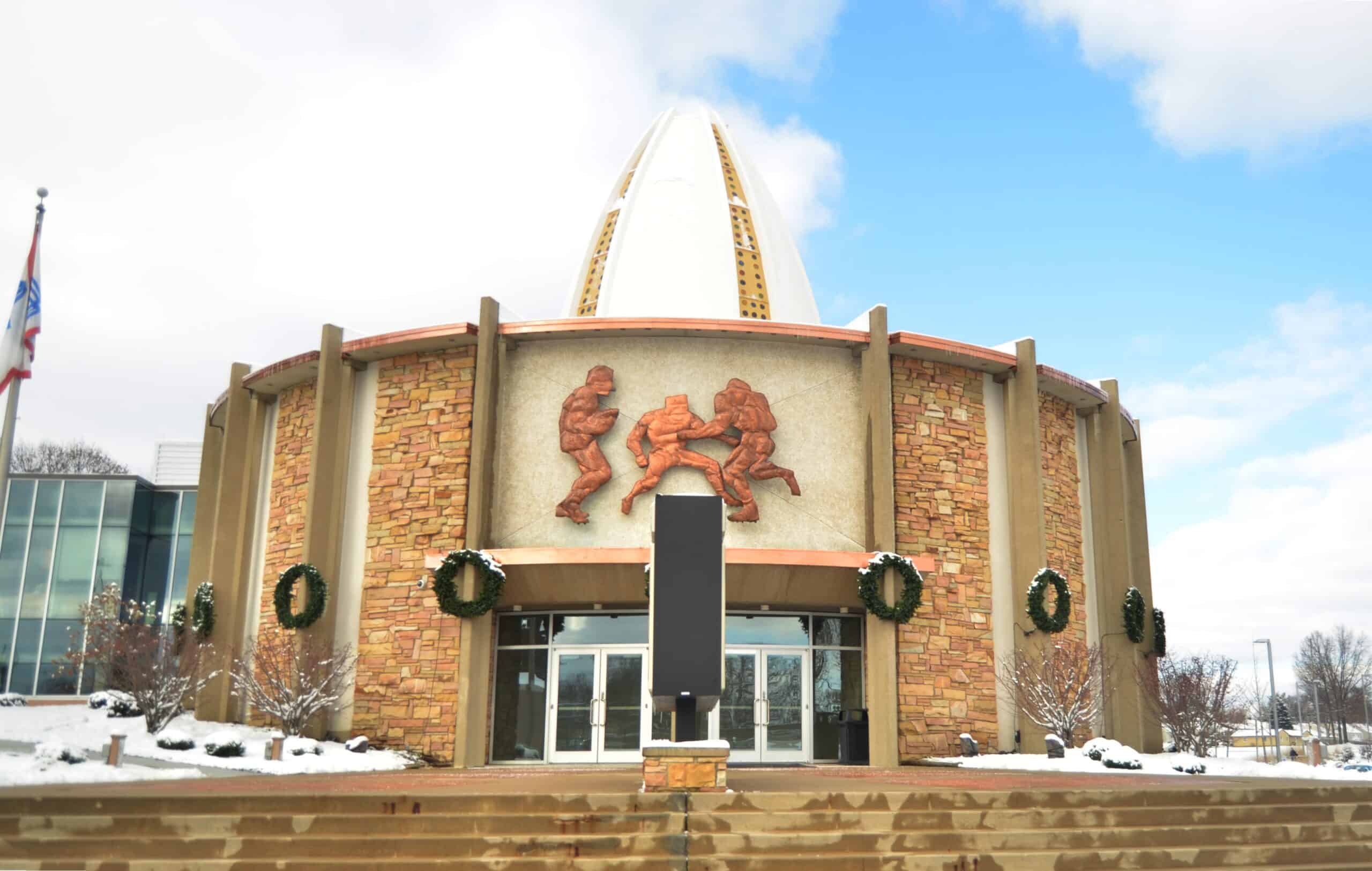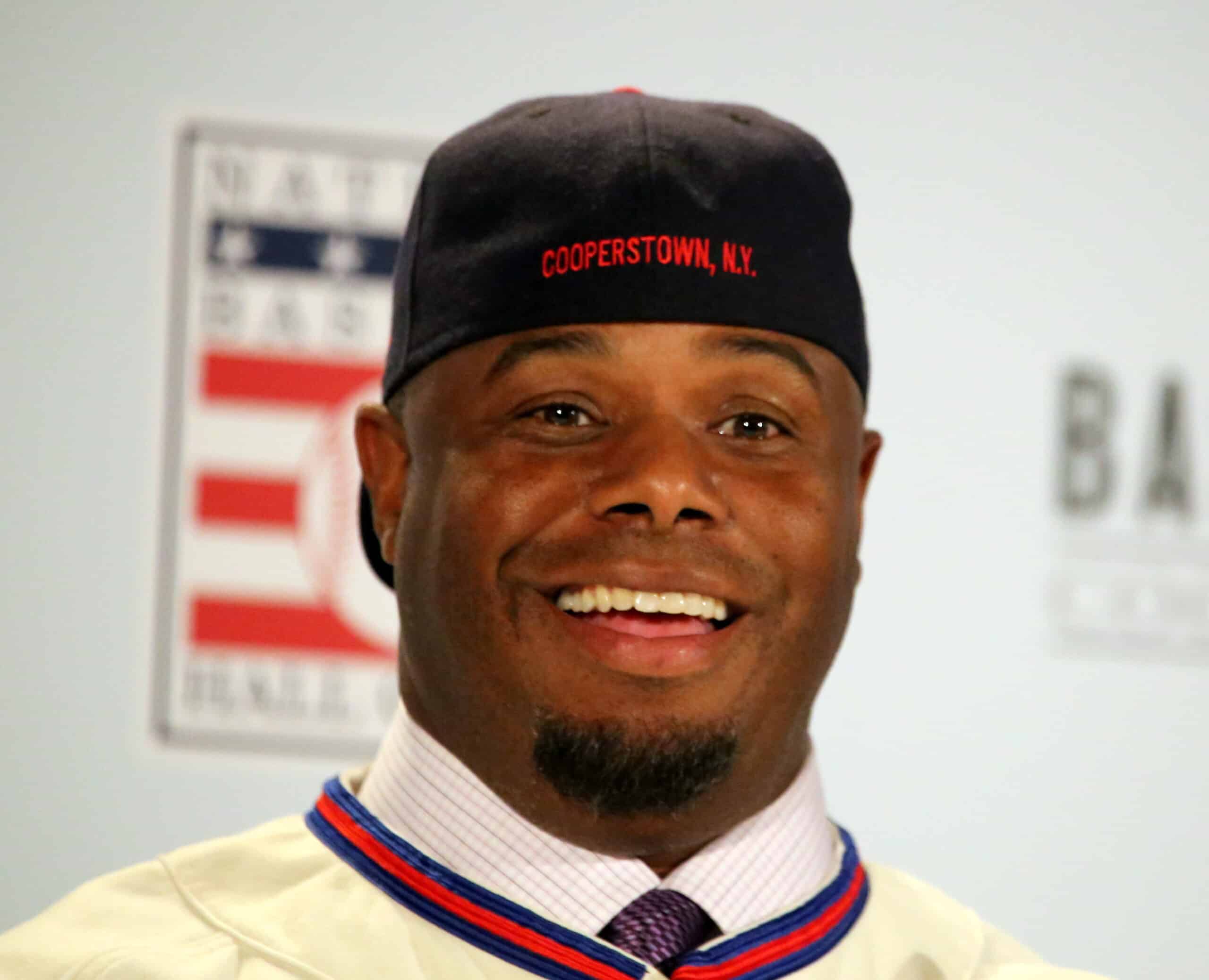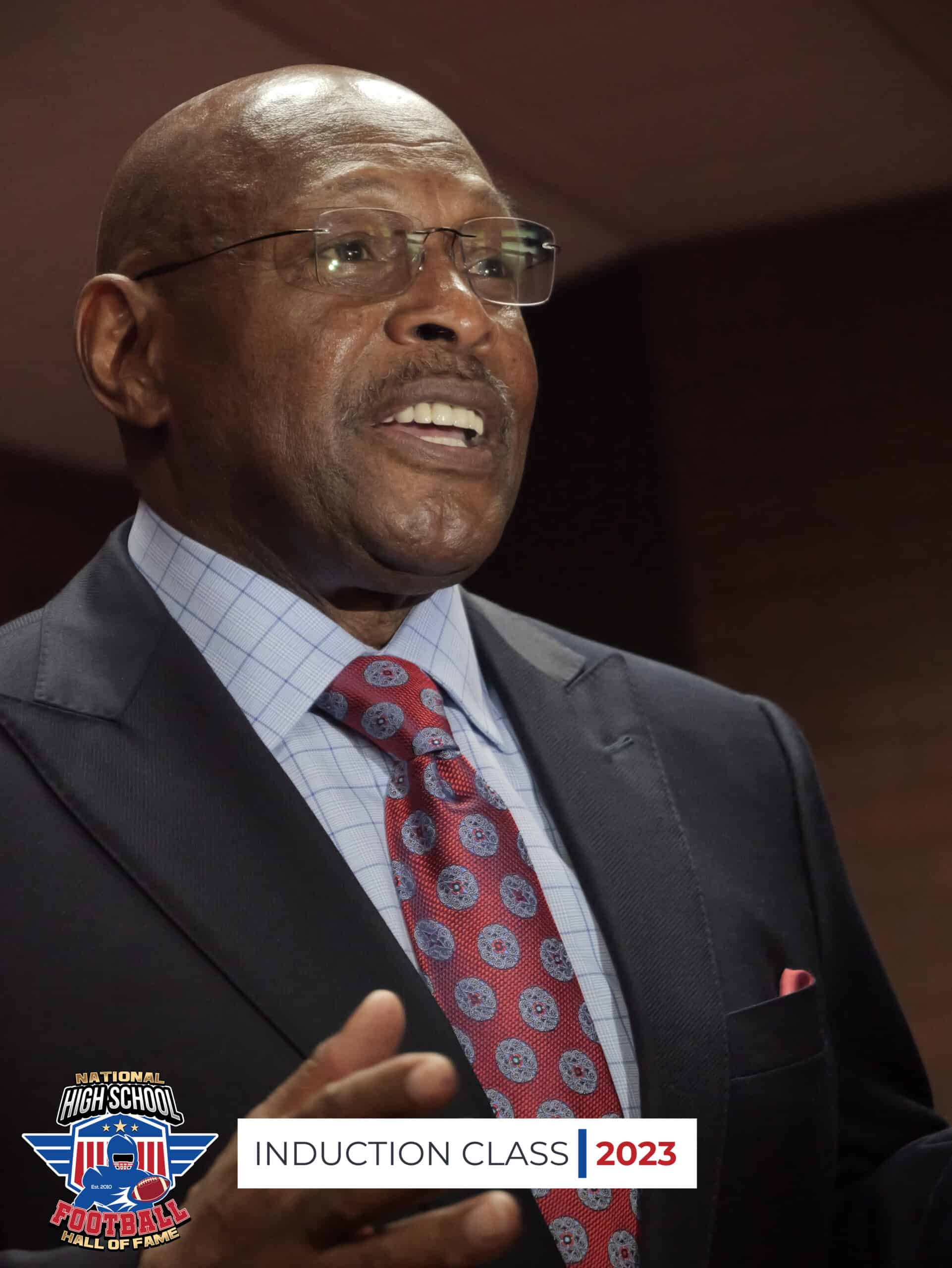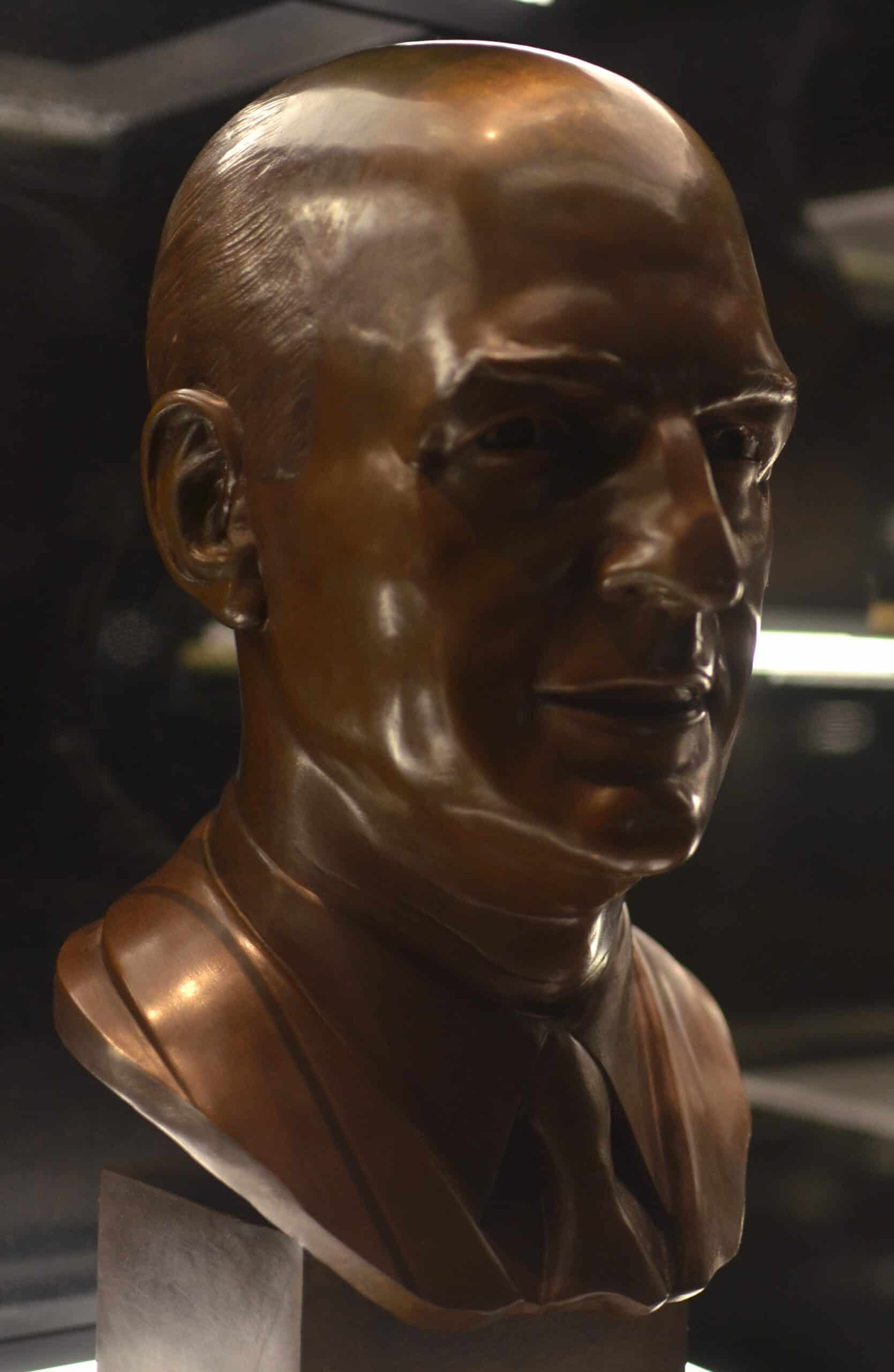Ohio has one of the deepest and richest athletic cultures in the United States. Sports are inseparable from the state’s history and are an integral part of the consciousness and identity of Ohioans. Not surprisingly, some of the greatest athletes in nearly every major sport have hailed from the Buckeye State.
Here’s a look at Ohio athletics and the ten biggest sports stars the state has ever produced. (One of these athletes is tied to the most talked-about corruption scandals in sports history. Click here for the full list of the worst corruption scandals in sports.)
Ohio Sports
Ohio was the birthplace of professional baseball. Formed in 1868, the Cincinnati Red Stockings (which would later become the Reds) were the first pro team.
The origins of the National Football League (NFL) also trace back to Ohio. The American Professional Football Association (precursor to the NFL) was formed in Canton in 1920. This city in northeast Ohio is now the site of the Pro Football Hall of Fame.
Today, Ohio is home to two NFL teams, two Major League Baseball (MLB) teams, two Major League Soccer teams, one team from the National Hockey League, and one from the National Basketball Association (NBA). Ohio is also home to thirteen Division I schools in the National Collegiate Athletic Association (NCAA). The state also houses more than 20 minor league professional teams and over 30 Division II and III colleges.
Choosing the Top Sports Stars from Ohio
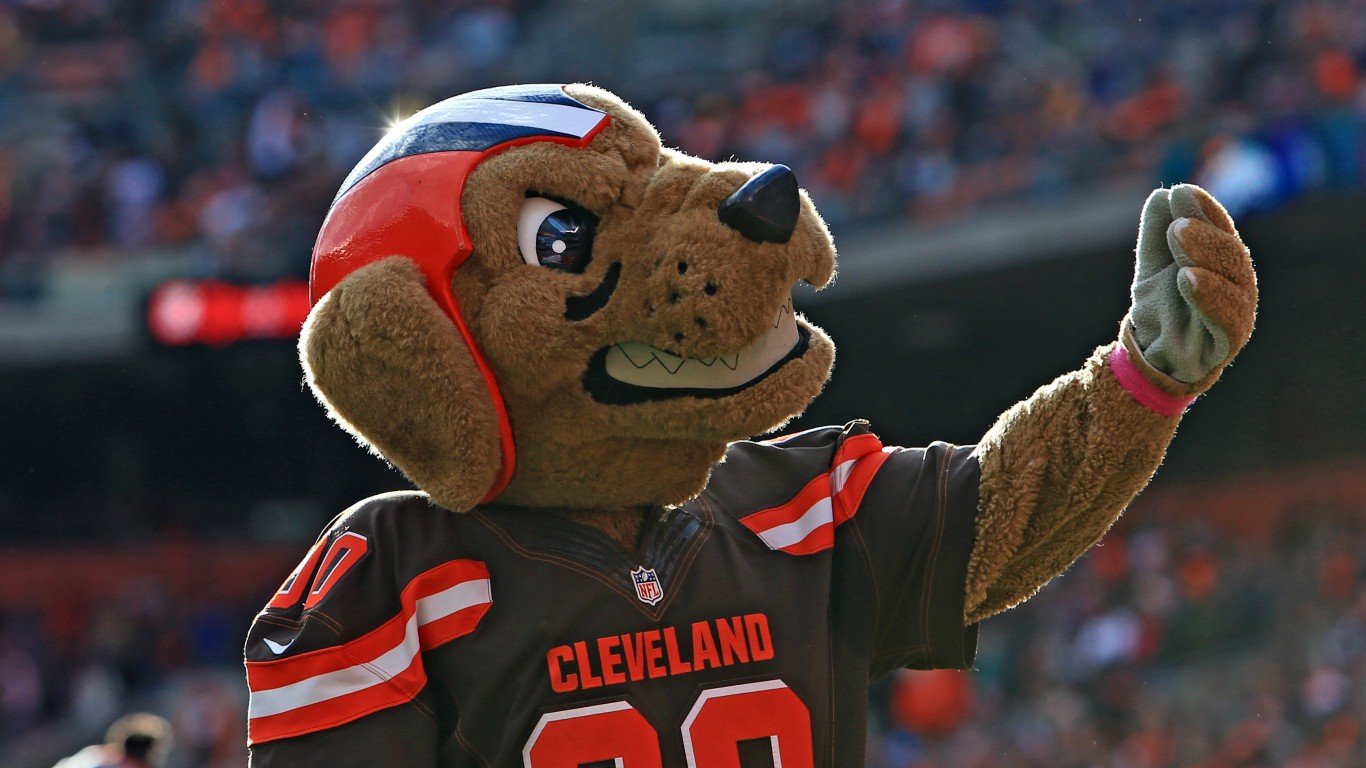
To compile this list of the ten biggest sports stars from Ohio, 24/7 Tempo used editorial discretion to weigh a variety of different metrics such as individual awards, individual and/or team championships, the lasting impact the athlete had on his/her sport, and the athlete’s overall historical legacy.
Only sports figures who were Ohio residents for the majority of their formative years were considered for this list. That eliminated stars such as Simone Biles, Stephen Curry, and John Heisman from consideration. Though these legendary athletes were born in Ohio, they moved during early childhood and grew up in other states.
Honorable Mentions

Limiting the greatest Ohio athletes to a list of ten is no easy endeavor. Several sports stars from the Buckeye State were oh-so-close to the cut and deserve honorable mentions.
Honorable Mention – Mike Schmidt

- Sport: Baseball
- Position: Third Base, First Base
Two athletes were closer to cracking the top ten than any others, the first of which was Mike Schmidt. Born in Dayton, Schmidt played college baseball at Ohio University. In 1971, he was selected by the Philadelphia Phillies in the second round of the MLB draft.
Schmidt went on to a storied career that ranks among the best ever. He was enshrined in the National Baseball Hall of Fame in 1995 and was selected as part of MLB’s All-Century Team in 1999.
Honorable Mention – Edwin Moses
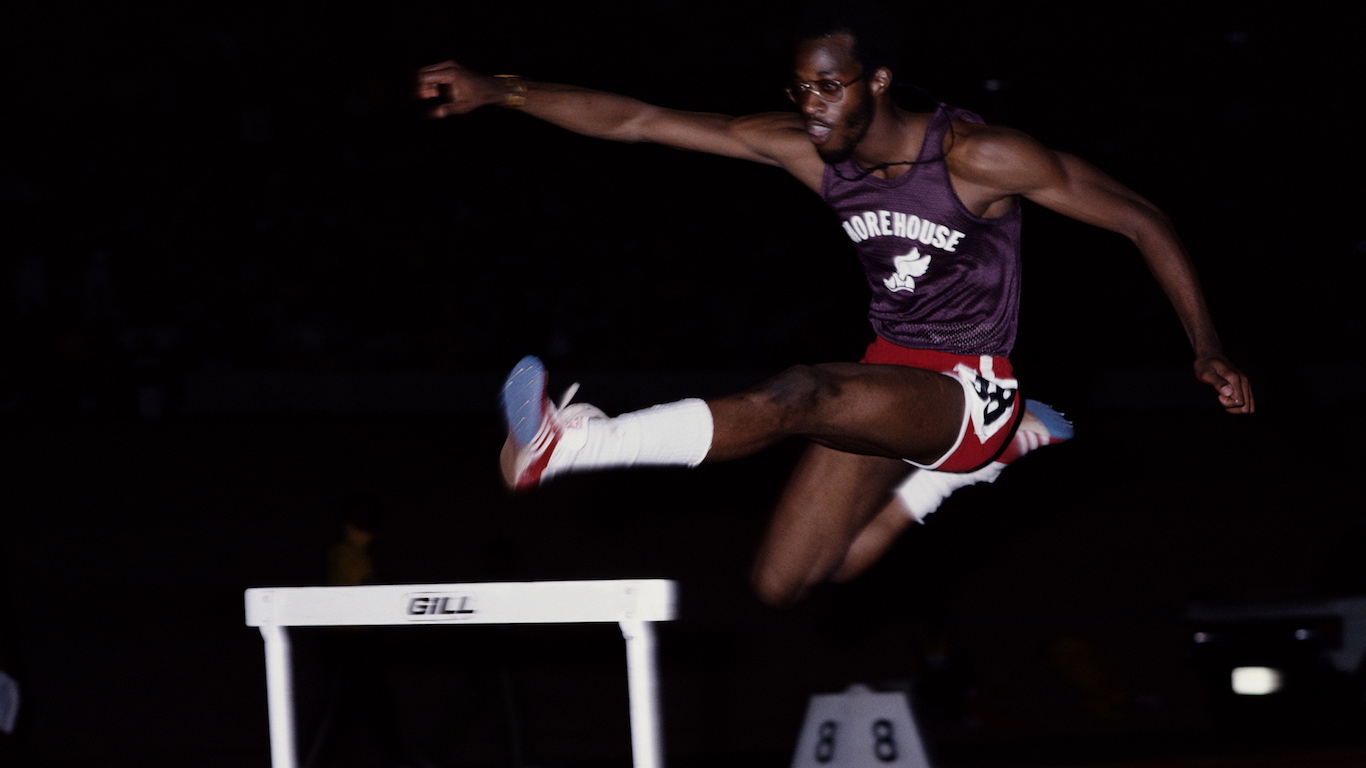
- Sport: Track and Field
Edwin Moses is the other star who came within a whisper of making the top ten list. Also born in Dayton, Moses was often viewed as more of a scholar than an athlete. In reality, he was both. He attended Morehouse College in Atlanta on an academic scholarship. (He would later earn a graduate degree from Pepperdine University.) The college did not have a track, so he practiced on high school tracks in the city. However, those tracks became the incubator for greatness.
Moses became the most dominant track star ever in the 400-meter hurdles. He won an astonishing 122 consecutive races. Those wins included two Olympic gold medals.
Other Honorable Mentions
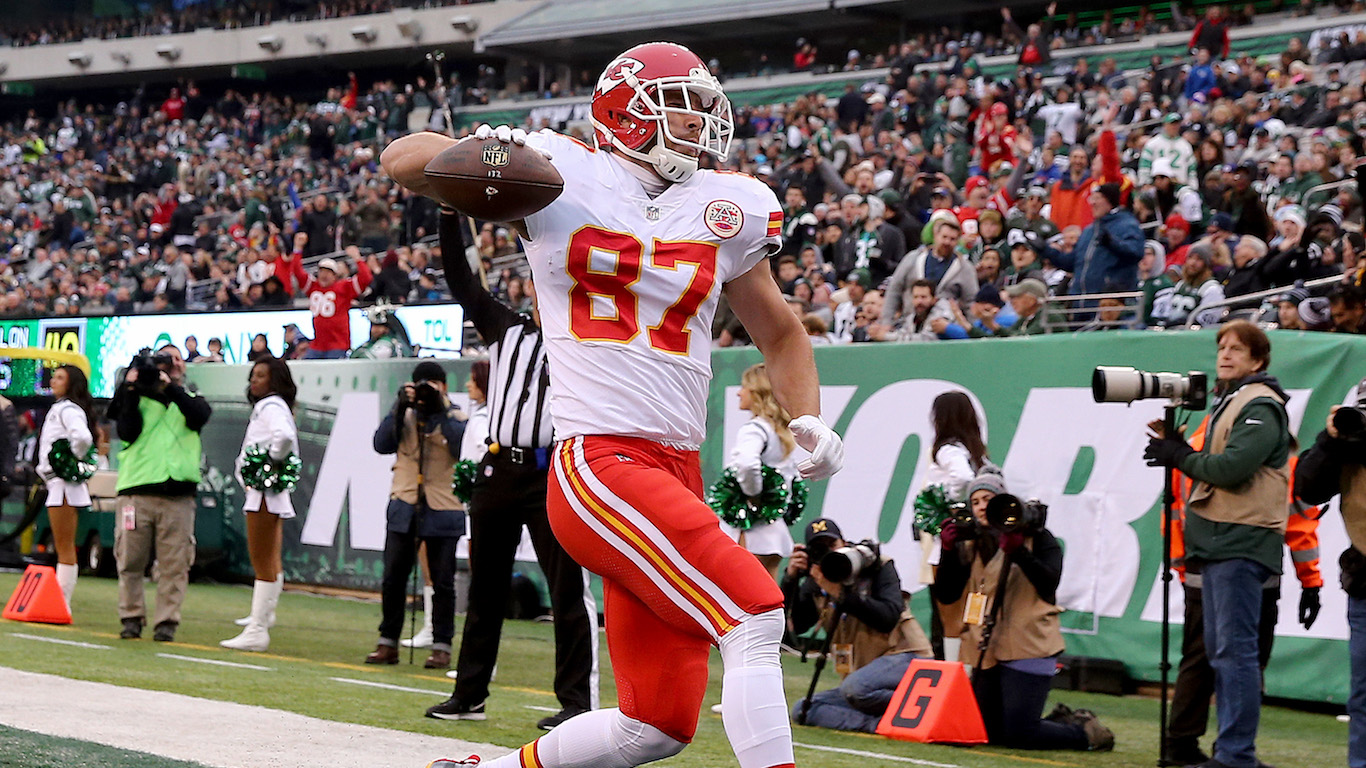
Ohio’s other athletes of honorable mention include George Sisler (baseball, first base), Scott Hamilton (figure skating), Madeline Manning (track and field), Roger Staubach (football, quarterback), and Rollie Fingers (baseball, relief pitcher). Active athletes who could potentially make a run at the top ten by the end of their careers include Travis Kelce (football, tight end), Jason Kelce (football, center), and Joe Burrow (football, quarterback).
Ohio’s Top Ten Sports Stars
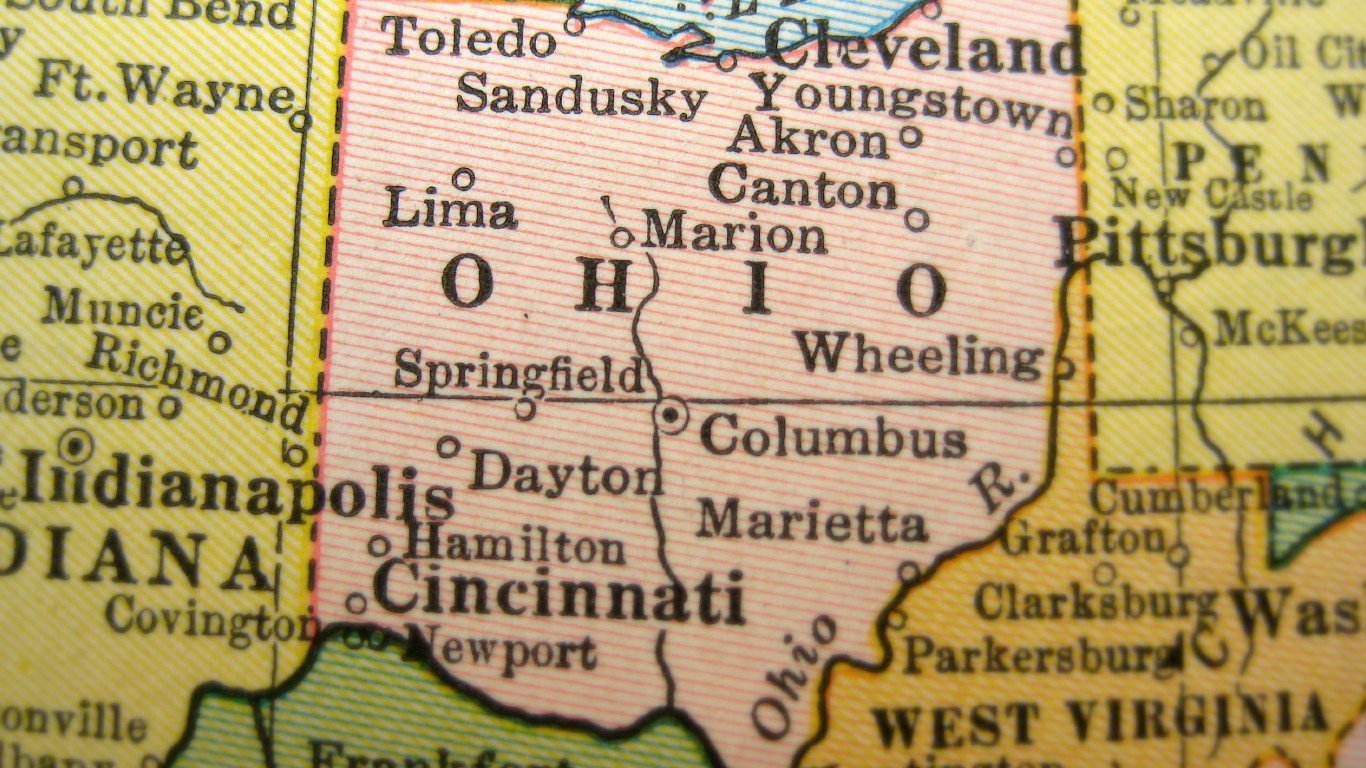
Here are the top ten biggest sports stars from Ohio.
10. Ken Griffey Jr.
- Sport: Baseball
- Position: Outfield
Hitting a Major League fastball is the most difficult thing to do in all of sports. Ken Griffey Jr. made it look effortless. Often known as “Junior” or “The Kid,” Griffey Jr. launched 630 career home runs with the sweetest swing the game has ever seen.
Griffey Jr. was born in Donora, Pennsylvania but grew up in Cincinnati where his father played for the Reds through the 1970s. The team won back-to-back World Series titles in 1975 and 1976 and was dubbed, “The Big Red Machine.” Griffey Sr.’s career would be eclipsed by that of his son, though.
Griffey Jr. was a standout at Moeller High School in Cincinnati and was named the U.S. high school baseball player of the year in 1987. He entered the MLB draft after high school and was selected by the Seattle Mariners as the first overall pick.
Griffey Jr. spent two seasons in the minor leagues and then enjoyed a magical ten-year career with the Mariners. Then, in 2000, Griffey Jr. was traded to his hometown Reds. This homecoming was heralded as one of the biggest moments in the history of Cincinnati sports. The fairytale didn’t materialize as expected, though. Injuries plagued Griffey Jr.’s time with the Reds and his production never reached the levels seen in Seattle. He was traded to the Chicago White Sox in 2008 and then returned to the Mariners in 2009 where he would finish his career.
Junior’s Awards and Accolades
Griffey Jr. was selected as the American League MVP in 1997. He won seven Silver Slugger Awards. His defensive prowess was recognized with ten Gold Gloves. “The Kid” hit 630 career home runs, the seventh most all-time. It must also be noted that, although these home runs were hit during MLB’s “steroid era,” there was never even a hint of a doping scandal with Griffey Jr. By all accounts, he played the game clean. Fans, especially those in Cincinnati, often wonder what Griffey Jr.’s final numbers might have been had he remained healthy after coming to the Reds.
Junior is a member of both the Mariners and Reds Halls of Fame. He was inducted into the National Baseball Hall of Fame in 2016
Oh, and who could forget one of the most magical moments to ever occur on a baseball field? On September 14, 1990, Griffey Sr. and Griffey Jr. made history when they hit back-to-back home runs as members of the Seattle Mariners. It is the only time a father-son duo has ever accomplished that feat.
Why Griffey Instead of Schmidt?
Why include Griffey Jr. in this Ohio top ten while Mike Schmidt is on the outside? It was not an easy choice. No sport is more focused on statistics than baseball. Many of Junior’s numbers top those of Schmidt, including career hits, batting average, and home runs. However, for those who lean more heavily into baseball’s analytics, Schmidt tops Junior in WAR, OPS (but only by .001), and OPS+. Schmidt was a ten-time All-Star. Junior was selected as an All-Star 13 times. Griffey was selected as the American League MVP once, while Schmidt received that honor in the National League three times. Each man was selected to MLB’s All-Century Team and both players are enshrined in the National Baseball Hall of Fame.
In the end, though, this is a list of the ten biggest sports starts from Ohio. As the son of a player on the Big Red Machine who later played for the Reds himself, Griffey Jr. has cemented his place among the all-time biggest sports stars from the Buckeye State.
9. Archie Griffin
- Sport: Football
- Position: Running Back
Archie Griffin was born at The Ohio State University Hospital on August 21, 1954. It was a fitting beginning, considering that he would become a legend at Ohio Stadium which sits less than half a mile from the hospital.
Griffin played football at Eastmoor High School and was named the state’s player of the year in 1971. After considering more than 150 scholarship offers, Griffin decided to attend The Ohio State University.
Griffin’s collegiate career was one of utter dominance. The running back amassed 5,589 rushing yards, a number that is still an Ohio State record. He received three All-American honors and won four Big Ten championships. He was selected as the Big Ten MVP two years in a row (1973, 1974).
The most notable of Griffin’s many accomplishments was his multiple Heisman Awards. This award is presented to the best player in college football. Griffin won the Heisman in back-to-back years (1974, 1975). He is the only player to win college football’s most prestigious award more than once.
Griffin was selected by the Cincinnati Bengals in the first round of the 1976 NFL Draft. He played for the Bengals until 1982 and appeared in one Super Bowl. The Bengals lost to the San Francisco 49ers in Super Bowl XVI. While Griffin is one of the greatest college players ever, his professional career did not mirror his outstanding years at Ohio State.
Griffin was enshrined in the College Football Hall of Fame in 1986. Ohio State retired his number 45 in 1999. He was inducted into the National High School Football Hall of Fame in 2023.
8. Paul Brown
- Sport: Football
- Position: Coach
Paul Brown was an Ohioan for most of his life. He was born in Norwalk on September 7, 1908, and died in Cincinnati on August 5, 1991. In many ways, he is the reason there is professional football in Ohio today. He is also regarded as one of the most innovative minds in the history of the game.
Brown grew up in grew up in Massillon where he played high school football. Despite his small size (he weighed less than 150 pounds), he excelled at quarterback during his junior and senior years. His dream was to play for Ohio State, but that dream did not materialize. Instead, he moved roughly 100 miles southwest to Oxford where he became the starting quarterback at Miami University. Brown took over the quarterback position after the departure of Weeb Ewbank who, like Brown, would become a legendary NFL coach. Miami University’s football program is known as the “Cradle of Coaches” for its propensity to produce elite football coaches.
Coaching Career
After college, Brown started coaching high school football. He was then hired as the head coach at Ohio State, a moment filled with redemption since he was not selected for the team as a player.
After three seasons at Ohio State, Brown was classified 1-A and commissioned as a lieutenant in the U.S. Navy in 1944. World War II ended the following year and Brown was never called up to active duty. During his military service, Brown was the football coach at Great Lakes Naval Training Station near Chicago.
After his stint in the military, Brown was named the coach of the newly created Cleveland Browns in 1946. Despite his objections, the franchise was named in his honor.
The team that Brown built became a dynasty, winning four consecutive titles in the All-America Football Conference from 1946-49, followed by three NFL championships in 1950, 1954, and 1955. In 17 seasons, Brown’s team posted a 167-53-8 record.
Brown was also instrumental in launching the Cincinnati Bengals in 1968. He was the general manager of the team, as well as the head coach for the first eight seasons. The Bengals opened Paul Brown Stadium in 2000, named in honor of the team’s first head coach. The stadium held this name until it was changed to Paycor Stadium in 2022.
Paul Brown, Innovator
The influence of Brown on professional football in Ohio cannot be overstated. Beyond that, though, he completely changed the way the game is played and coached. He created a scouting program to evaluate college players the likes of which had never been seen before. He is also credited with inventing the facemask that is now part of every football helmet. Brown created the football playbook and was the first coach to call plays from the sideline. He invented the draw play. Brown and his offensive coordinator, Bill Walsh, created the foundation of the famous West Coast offense.
Most significant of all, Brown broke the color barrier that existed in professional sports when he welcomed Marion Motley and Bill Willis, both African-Americans, onto his Cleveland football team in 1946. This was one year before Jackie Robinson’s debut in MLB.
Brown became the first head coach to win a championship in both college and the NFL. He was inducted into the Pro Football Hall of Fame in 1967.
7. John Havlicek
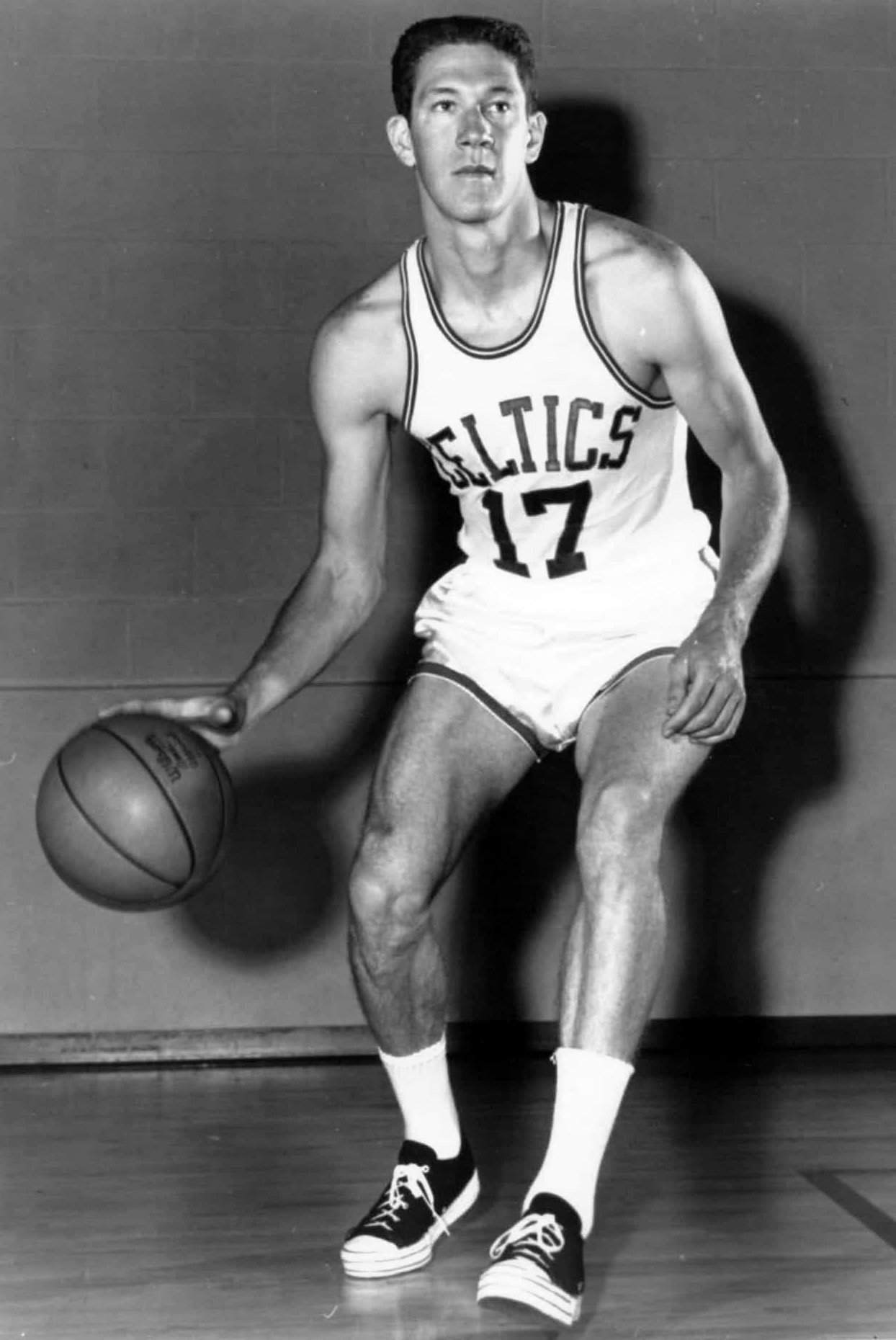
- Sport: Basketball
- Position: Small Forward, Shooting Guard
John Havlicek was born on April 8, 1940, in Martins Ferry, Ohio, a small town on the Ohio River which demarcates the Ohio/West Virginia border. He attended Bridgeport High School where he was a three-sport athlete.
Havlicek played basketball for The Ohio State University. The Buckeyes won the NCAA title in 1960 with Havlicek and other basketball legends such as Jerry Lucas and Bob Knight.
After college, Havlicek was drafted by both the NFL’s Cleveland Browns and the NBA’s Boston Celtics. After a brief stint at the Browns training camp, Havlicek chose to play in the NBA with the Celtics. That was a wise decision, indeed.
Havlicek spent his entire 16-season career with the Celtics. Nicknamed “Hondo” for his resemblance to John Wayne, Havlicek became the first player to score 1,000 points in 16 consecutive seasons. He is perhaps the most versatile player in NBA history, able to play any position on the floor. He was also known for his full-out effort from the tipoff until the final buzzer of every game.
The Celtics Dynasty
During his remarkable run with the club, the Celtics won eight NBA championships (1963–1966, 1968, 1969, 1974, 1976). Havlicek was named the NBA Finals MVP in 1974. He was an All-Star in 13 consecutive seasons.
While Havlicek’s career spanned over a decade and a half, one moment has come to define him as a player. In the 1965 Eastern Conference Finals, he tipped the inbounds pass from Hal Greer of the Philadelphia 76ers in the game’s waning moments and preserved the Celtics one-point win. Announcer Johnny Most’s call of, “Havlicek steals it…Havlicek stole the ball!” is considered the greatest radio call in NBA history.
Havlicek’s number 17 was retired by the Celtics and his number 5 was retired by the Buckeyes. He was inducted into the Naismith Basketball Hall of Fame in 1984 and the National Collegiate Basketball Hall of Fame in 2006.
6. Don Shula
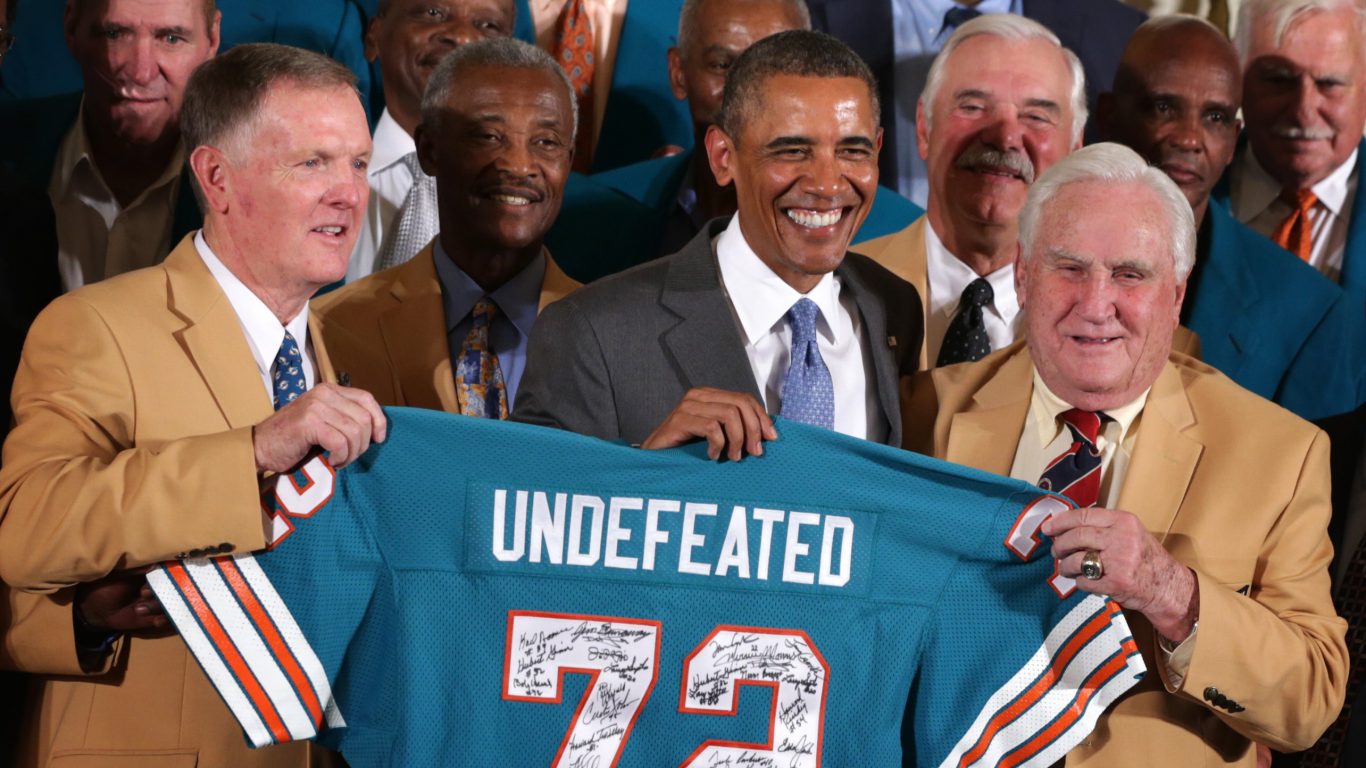
- Sport: Football
- Position: Coach
Don Shula was born on January 4, 1930, in Grand River, Ohio, a small town along the shores of Lake Erie. He played high school football at Harvey High School, against his mother’s wishes. She disliked the violence of the game and had forbidden her son to play after he was injured years earlier. Shula forged his mother’s signature on the permission slip so he could try out for the high school team.
Shula played college football at John Carroll University, a Jesuit school outside of Cleveland. The university’s football stadium is now named, “Don Shula Stadium” in his honor.
After graduating as a sociology major, Shula was drafted as a defensive back by the Cleveland Browns (coached by Paul Brown) in the ninth round of the 1951 NFL Draft. Shula played in all of the Browns’ games that season.
Shula’s Ohio Army National Guard unit was activated in January 1952 during the Korean War. Ten months later, the unit was deactivated and Shula returned to the Browns. His stay in Cleveland would not last long, though. He was traded to the Baltimore Colts in early 1953. Shula played with the Colts until the team waived him in 1957. He then played one season with the Washington Redskins before retiring as a player.
Shula’s playing career lasted seven seasons but was rather unremarkable when compared to the greats of the game. When he moved into coaching, however, a legend was born.
Coach Shula
Shula’s coaching career began when he was hired as the defensive backs coach at the University of Virginia in 1958. After one season in Virginia, Shula accepted the defensive backs coaching job at the University of Kentucky. After one season in Kentucky, Shula was hired as the defensive backfield coach for the NFL’s Detroit Lions in 1960.
Shula’s first head coaching job came in 1963 when he was hired to coach the Baltimore Colts. At 33 years, 4 days old, he was the youngest head coach in NFL history at the time. Shula coached the Colts through 1969. He was then hired as the head coach of the Miami Dolphins, a position he would hold until 1995.
Don Shula’s record as an NFL head coach was an astounding 347-173-6, giving him a .665 winning percentage. His 347 wins are the most of any coach in NFL history. In his 33-year coaching career, Shula only endured two losing seasons. He led teams to the playoffs 19 times. He reached the Super Bowl six times and won two championships.
Undefeated
Shula oversaw the greatest single season by any team in history. His 1972 Dolphins remain the only NFL team to ever post a perfect record in both the regular season and postseason. That team went 17-0 and defeated the Washington Redskins in Super Bowl VII.
The Dolphins also won the Super Bowl in 1973 and are one of only eight teams to win back-to-back championships.
Shula was enshrined in the Pro Football Hall of Fame in 1997. His induction into the Hall was a homecoming of sorts. Canton is only 70 miles from the small Ohio town of Grand River where Shula was born.
5. Pete Rose
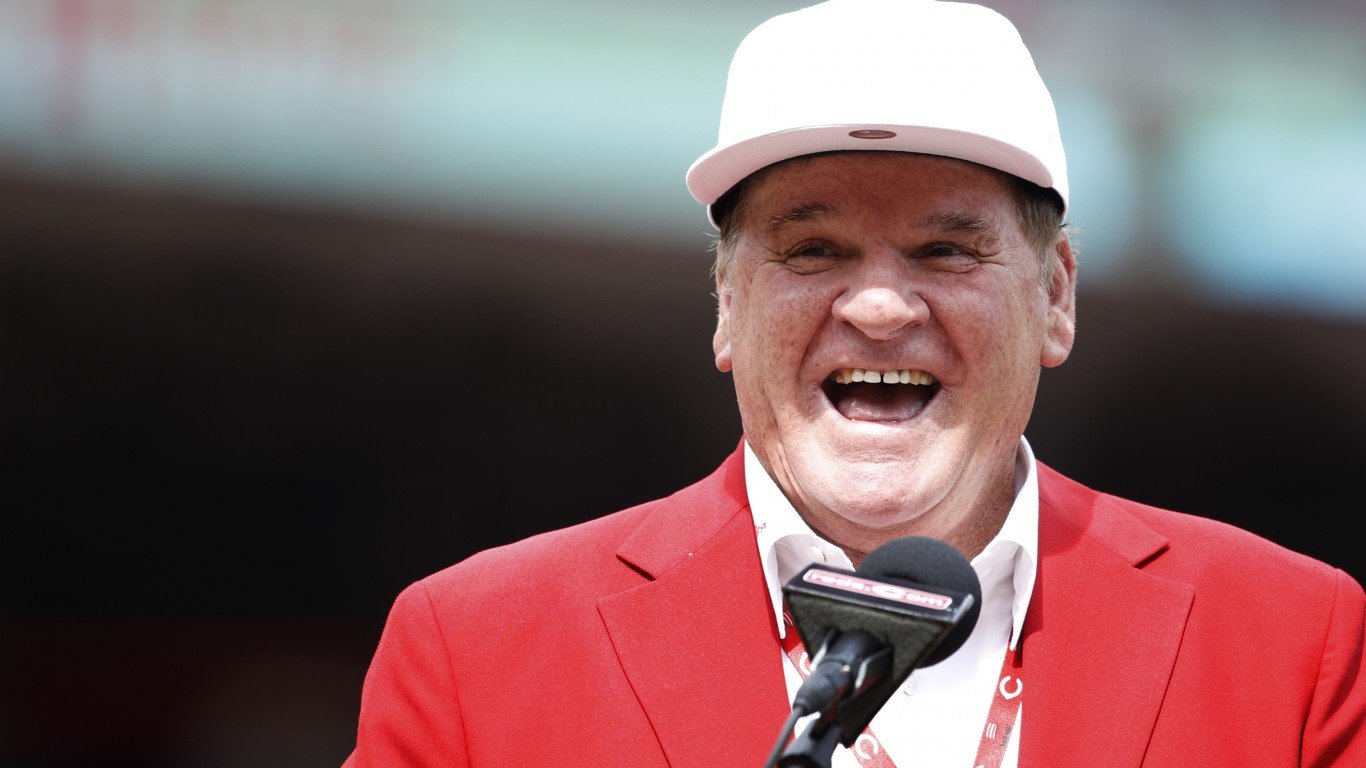
- Sport: Baseball
- Position: Third Base, First Base, Outfield
While Pete Rose is undoubtedly one of the greatest sports figures to come from Ohio, he is arguably the most controversial.
Peter Edward Rose was born on April 14, 1941, in Cincinnati, the city where he broke one of baseball’s most hallowed records. It is also the city where he broke one of the sport’s most sacred rules.
Rose played baseball and football at Western Hills High School. He began playing amateur baseball in 1960 and started his professional career with the Cincinnati Reds in 1963.
“Charlie Hustle”
Rose’s all-out style of play was evident from the very beginning. Whitey Ford of the New York Yankees derisively referred to him as “Charlie Hustle” after seeing Rose sprint to first base after a walk and leap in an attempt to catch a Mickey Mantle home run that was far over his head. Ford intended to mock him with the nickname, but Rose embraced it. The moniker followed him for the remainder of his career.
Rose hit .273 during his first season with the Reds and was named the National League Rookie of the Year. After that season, he enlisted in the United States Army Reserves and served six months of active duty at Fort Knox.
Rose played for his hometown Reds until 1978 and was an integral part of the Big Red Machine that won back-to-back World Series titles in 1975 and 1976. Rose was named the World Series MVP in 1975.
He then signed a four-year contract with the Philadelphia Phillies, joining fellow Ohioan Mike Schmidt. Rose added another World Series ring to his collection when the Phillies took the crown in 1980.
Rose played part of one season (1984) with the Montreal Expos before he was traded back to the Reds where he was given the role of player-manager. He is the last player in MLB to hold both those roles simultaneously. He retired as a player in 1986 but would remain as the Reds manager until 1989.
4,192
It was during his final stint with the Reds that Rose broke a record that many had previously believed to be untouchable. Ty Cobb had recorded 4,191 MLB hits during his 24-season career. In a game against the San Diego Padres on September 11, 1985, Rose lined a 2-1 pitch into left-centerfield for the 4,192nd hit of his career, breaking the record previously held by Ty Cobb.
The game was paused as the capacity crowd of 47,237 gave a seven-minute standing ovation. The Reds dugout emptied as teammates stormed the field and hoisted Rose onto their shoulders. A Corvette with the license plate “PR 4192” drove onto the field, a gift for Rose from Reds owner, Marge Schott. It was a scene unlike any ever witnessed on a baseball diamond.
Interestingly, all of the hoopla should have happened three days earlier in a game at Wrigley Field. Cobb’s hit total has been revised down to 4,189 hits, meaning Rose actually broke the record with his 4,190th hit on September 8 in Chicago. Nevertheless, Rose was and is the all-time hits leader in MLB.
Banned from Baseball
That pinnacle achievement has since been tarnished by scandal. Accusations swirled about Rose’s gambling, including alleged bets on 52 Reds games in 1987. Rose denied all the accusations and even filed a lawsuit against MLB Commissioner, Bart Giamatti.
MLB has a longstanding rule which states, “Any player, umpire, or club, or league official, or employee, who shall bet any sum whatsoever upon any baseball game in connection with which the bettor has a duty to perform shall be declared permanently ineligible.”
Rose eventually dropped his efforts to fight the allegations. On August 24, 1989, he voluntarily accepted a lifetime ban from MLB. He has applied for reinstatement multiple times but has been denied at every turn.
In addition to the ban from MLB because of gambling, Rose was convicted of tax evasion in 1990. Allegations of statutory rape have also been levied against Rose, claiming he had a sexual relationship with a teenager in the 1970s. These allegations did not surface until 2017 and Rose was not charged due to the statute of limitations.
Rose was a 17-time All-Star. He won the Silver Slugger Award in 1981 and two consecutive Gold Gloves (1969, 1970). He was a three-time National League batting champion (1968, 1969, 1973).
Along with the all-time hits record, Rose holds MLB records for the most career singles (3,215), most games played (3,562), most at-bats (14,053), and most plate appearances (15,890).
Rose’s number 14 has been retired by the Reds and he is a member of the team’s Hall of Fame. He was named to MLB’s All-Century team in 1999. However, his lifetime ban from MLB includes a permanent disqualification from the National Baseball Hall of Fame.
4. LeBron James
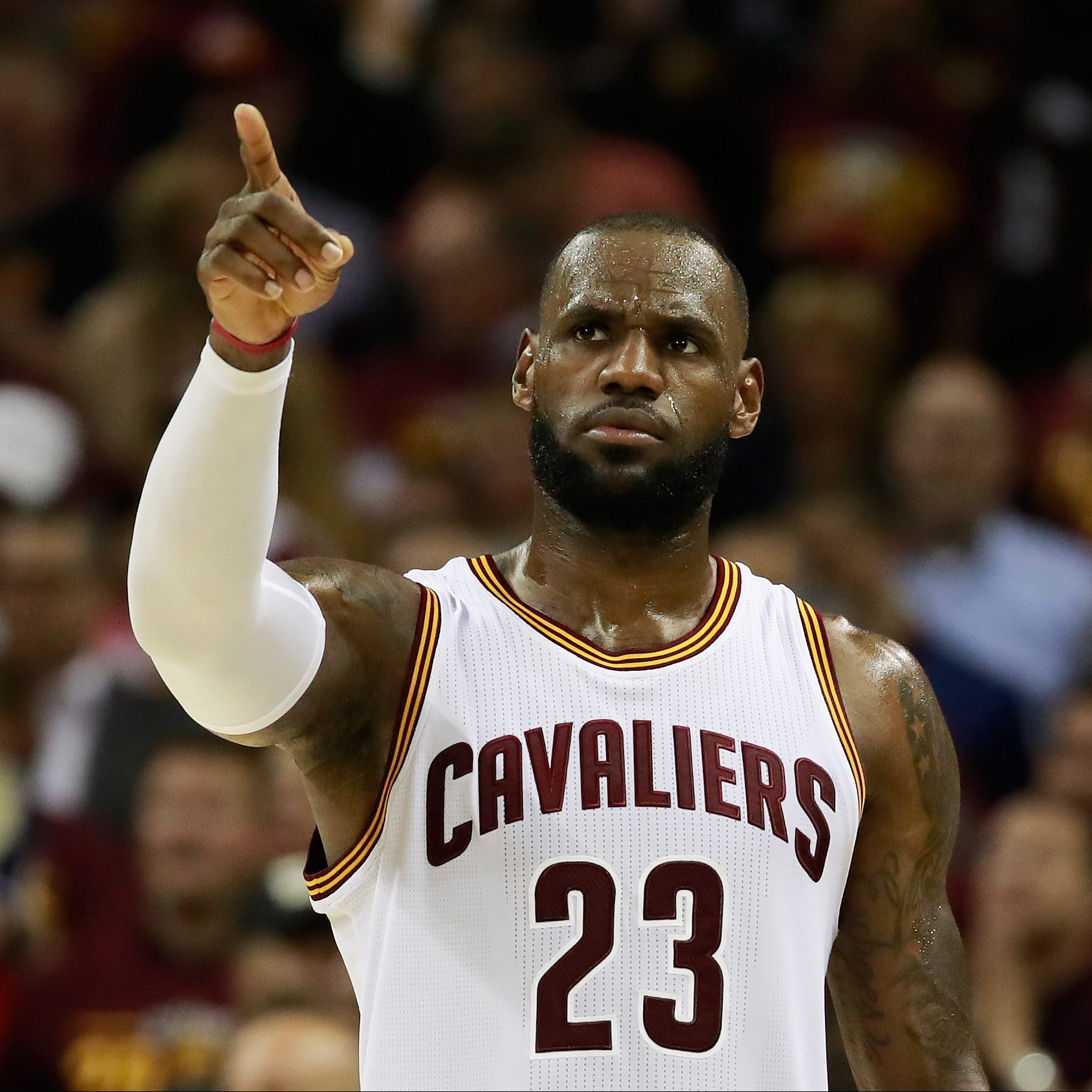
- Sport: Basketball
- Position: Small Forward, Power Forward
LeBron James is the only sports figure on this list that is still competing. Since history and legacy weighed heavily in our methodology, it may seem odd to some that James is already fourth on the list. His story is still being written, so how can he already rank so high? Well, to put it simply, because he’s LeBron James. That’s why. Others might even argue that he should already be ranked higher than fourth.
Born in Akron in 1984, James’ early life was difficult as he was raised by a single mother who struggled to support him financially. His father had a long criminal record and was never involved in his life. James later moved in with the family of a local coach. That coach introduced him to basketball.
James played high school basketball at St. Vincent–St. Mary High School. He was named Ohio Mr. Basketball for three consecutive years, from 2001 to 2003. James remains the only player in state history to receive the award three times. He was also named the National High School Player of the Year twice (2002, 2003).
Professional Career
James entered the NBA draft out of high school. He was the first overall pick in the 2003 draft, selected by the Cleveland Cavaliers. It was almost poetic that the three-time Ohio Mr. Basketball would continue playing in the Buckeye State. James was named the NBA Rookie of the Year after that first season.
James played for Ohio’s only NBA team until 2010 when he became an unrestricted free agent. On July 8, James announced that he would sign with the Miami Heat in a televised ESPN special entitled, “The Decision.” James played with the Heat until 2014 when he returned to the Cavaliers. In 2018, James signed with the Los Angeles Lakers where he still plays today.
There are not enough superlatives to adequately describe James’ career. His nickname, “King James,” speaks volumes about what he has accomplished.
James has won four NBA championships: 2012 and 2013 (Heat), 2016 (Cavaliers), and 2020 (Lakers). He was named the Finals MVP in all four of those years.
James has been named the NBA MVP four times (2009, 2010, 2012, 2013). He was the NBA scoring champion in 2008. He is a 19-time All-Star and was named the MVP of the All-Star Game three times (2006, 2008, 2018). He is also a three-time Olympic medalist, winning bronze in 2004 and gold in 2008 and 2012.
All-Time Scoring Leader
On February 7, 2023, James broke the all-time NBA scoring record when he surpassed the 38,387-point mark set by Kareem Abdul-Jabbar. Kevin Durant, the next active player on the list, is in tenth place and trails James by over 11,700 points.
One of the quintessential sports arguments compares James to Michael Jordan, asking the question, “Who is the greatest of all time?” While those debates continue to rage on, one thing is certain…James is the greatest basketball player from Ohio and is among the very biggest sports stars to emerge from the state.
3. Denton True “Cy” Young
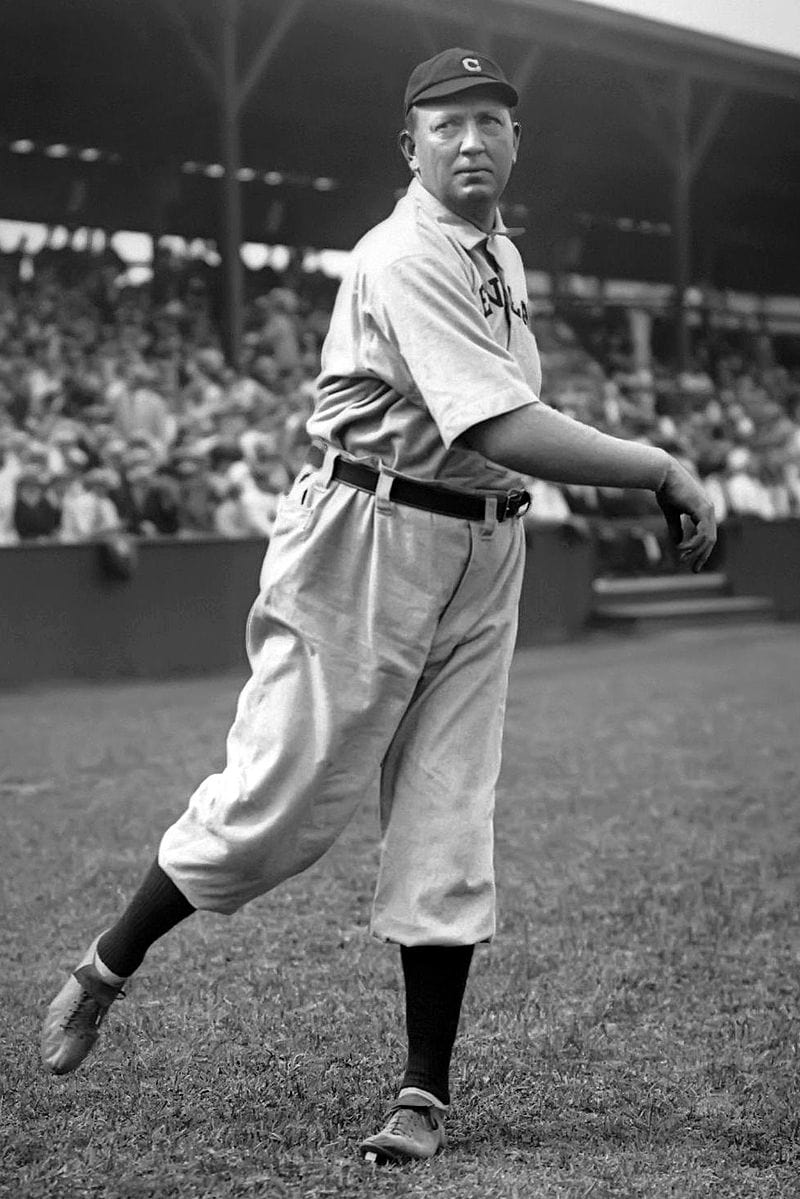
- Sport: Baseball
- Position: Pitcher
Denton Young was born in Gilmore, Ohio in 1867. He dropped out of school after the sixth grade to work on his family’s farm. When he wasn’t farming, he spent his time playing in amateur baseball leagues. He started playing minor league baseball in Canton in the late 1880s. He soon moved to the majors when he accepted an offer to pitch for the Cleveland Spiders.
Young’s devastating fastball destroyed some of the fences at the Cleveland ball yard. Someone noted that it looked like a cyclone had hit those fences, and that gave rise to Young’s lifelong nickname, “Cy.”
Young pitched for the Spiders until 1898. He played for the St. Louis Perfectos/Cardinals for two seasons. He then moved to Boston where he pitched for the Americans/Red Sox until 1908. Young then returned to Cleveland where he pitched for the Naps until 1911. (The Cleveland Spiders organization folded soon after Young departed in the late 1890s.) He completed his career in 1911 while pitching for the Boston Rustlers.
Unbreakable Records
The numbers from Young’s career are simply outrageous. He set multiple MLB records that still stand 113 years later. Young’s 511 wins are the most ever recorded by a pitcher. In fact, he recorded 94 more wins than Walter Johnson, who sits in second place on the all-time wins list.
Young also holds MLB records for the most consecutive hitless innings pitched (25 ⅓), most complete games (749), most games started (815), and most innings pitched (7,356). Young threw complete games in 92% of the games he started, an other-worldly statistic that will certainly never be seen again. ESPN ranks Young’s 511 wins and 749 complete games among the most unbreakable records in sports.
Young won a World Series with the Boston Americans in 1903. He pitched three no-hitters, including one perfect game on May 5, 1904. Young is enshrined in the Cleveland Guardians and Boston Red Sox Halls of Fame. He was inducted into the National Baseball Hall of Fame in 1937 and was named to MLB’s All-Century Team in 1999.
In 1956, a year after Young’s death, the Cy Young Award was created to honor the best MLB pitcher each season. Don Newcombe of the Brooklyn Dodgers was the first to win the award. Roger Clemens won seven Cy Youngs during his career, more than anyone in history.
2. Jack Nicklaus
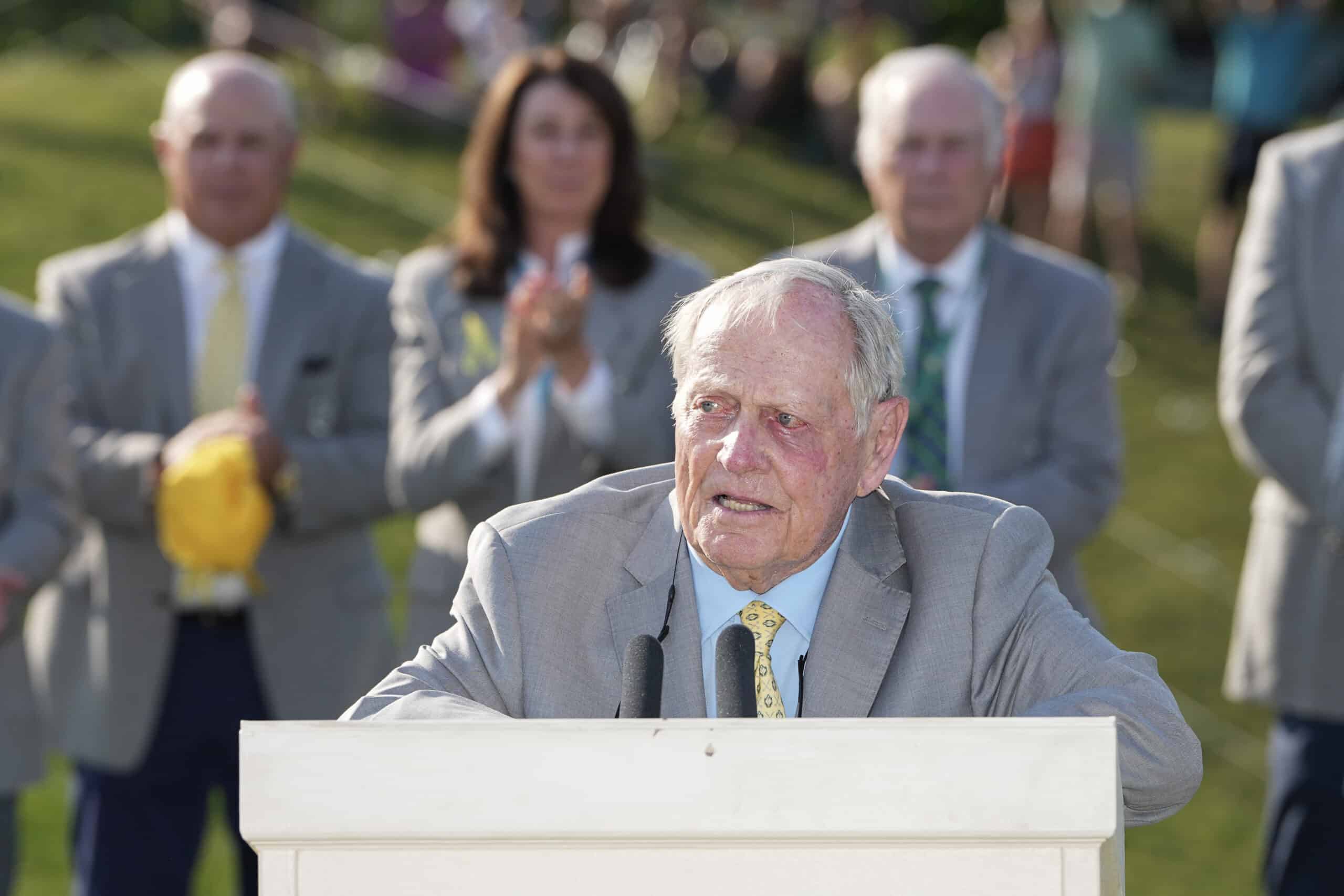
DUBLIN, OHIO - JUNE 04: Jack Nicklaus speaks during the trophy ceremony after the final round of the Memorial Tournament presented by Workday at Muirfield Village Golf Club on June 04, 2023 in Dublin, Ohio. (Photo by Dylan Buell/Getty Images)
- Sport: Golf
Like the LeBron vs. Jordan debate, the question of the greatest golfer of all time often comes down to two players: Tiger Woods and Jack Nicklaus. A strong case can be made for either man, but since our focus is on the biggest sports stars from Ohio (Woods is from California), we’ll set our focus on “The Golden Bear.”
Nicklaus was born in Columbus in 1940. He attended Upper Arlington High School. The school’s athletic teams were known as the Golden Bears, a nickname that would coincidentally be given to Nicklaus later in life by Australian sportswriter Don Lawrence who said that Nicklaus looked like a “cuddly, golden bear” out on the links.
Nicklaus began golfing at age 9. When he was 12, he won the first of his five straight Ohio State Junior titles. In 1956, Nicklaus won the Ohio Open at only 16 years old.
Nicklaus attended The Ohio State University where he won the United States Amateur Championship twice (1959, 1961), as well as the NCAA Championship (1961). He was the first player ever to win the U.S. Amateur and the NCAA Championship in the same year.
Pro Career
Nicklaus began his professional career on the PGA Tour in 1962. Decades of sheer dominance would follow. He would not retire from competitive golf until 2005, 43 years after his professional debut.
In his illustrious career, Nicklaus won all of golf’s major tournaments, a feat known as a Career Grand Slam. He is one of only five golfers to reach that milestone.
Nicklaus won The Masters Tournament six times (1963, 1965, 1966, 1972, 1975, 1986), more than anyone else in history. He won the PGA Championship five times (1963, 1971, 1973, 1975, 1980). Nicklaus also won the U.S. Open four times (1962, 1967, 1972, 1980) and the Open Championship three times (1966, 1970, 1978).
“The Golden Bear” won his first major championship in 1962 when he was 22 years old. His final major win came in 1986 when he was 46. All told, Nicklaus won 18 majors, more than any other golfer in history. Woods holds second place with 15 majors.
Nicklaus was named the PGA Player of the Year five times (1967, 1972, 1973, 1975, 1976). He played in six Ryder Cups, captaining the American team twice (1983, 1987). His 73 PGA Tour wins are the third-most all-time.
Nicklaus is ninth on ESPN’s list of the top North American athletes of the 20th century. He was inducted into the World Golf Hall of Fame in 1974.
1. Jesse Owens

- Sport: Track and Field
James Cleveland “Jesse” Owens was born September 12, 1913, in Oakville, Alabama. While not an Ohioan by birth, Owens moved to the Buckeye State as a child. His father, Henry Cleveland Owens, had been a sharecropper in Alabama but moved his family to Ohio as part of the Great Migration. In one of the largest movements of people in U.S. history, the Great Migration saw some six million African-Americans move from the American South to Northern, Midwestern, and Western states. This mass exodus was in response to the racial violence and oppressive Jim Crow laws that were prevalent in southern states.
After the move to Ohio, Owens worked in a grocery store and shoe repair shop to help support his family. He also discovered his love of running.
Owens attended East Technical High School in Cleveland. During his time at the school, he won multiple state track and field titles.
After high school, Owens attended The Ohio State University. He was not allowed to live in the same dorms or eat in the same restaurants as his white teammates, though. In the face of persistent segregation and racism, Owens won eight gold medals at the 1935 and 1936 NCAA championships, earning him the nickname, “The Buckeye Bullet.”
The Greatest 45 Minutes in Sports
On May 25, 1935, Owens made history at a Big Ten meet. He set three world records and tied a fourth, all in the span of just 45 minutes. At this meet in Ann Arbor, Michigan, Owens tied the 100-yard dash world record record with a time of 9.4 seconds. After that, he set a world record in the long jump with a distance of 26 feet, 8 ¼ inches. He also set a world record in the 220-yard low hurdles with a time of 22.6 seconds, becoming the first person ever to cross the finish line under 23 seconds. Finally, he set a new world record in the 220-yard dash with a time of 20.3 seconds.
It must also be noted that Owens accomplished all of this while he was injured. He had fallen down a flight of stairs earlier that week. In 2005, Richard C. Crepeau, professor of sports history at the University of Central Florida, declared Owens’ record-setting day to be the greatest athletic achievement since 1850.
1936 Olympics
While that day in Michigan might mark the pinnacle of Owens’ athleticism, his most historic achievement came a year later in Nazi Germany. The 1936 Olympic Games in Berlin were the subject of much controversy. Adolf Hitler planned to use the Games to showcase the dominance of white, specifically German, athletes. Hitler had organized the construction of a new 100,000-seat track and field stadium, along with numerous other arenas. The 1936 Olympics would be the first ever to be televised. Radio coverage of the Games would reach 41 countries. The stage was set for Hitler to demonstrate Germany’s resurgence to the world, along with his regime’s views of Aryan supremacy.
Many people thought the United States should boycott the Games. Black athletes were especially pressured to boycott the event. For a time, it seemed as if Owens would indeed skip the 1936 Olympics. However, he eventually chose to compete, along with seventeen other black athletes from the U.S. Owens’ decision would send reverberations throughout the world.
Four Golds
In the first week of the 1936 Olympics, Owens won gold medals in the 100-meter sprint, the 200-meter sprint, the long jump, and the 4 x 100-meter relay. A black athlete winning four gold medals in Hitler’s newly constructed track and field stadium was certainly not what the Führer had in mind. Nazi minister Albert Speer later recalled that Hitler “was highly annoyed by the series of triumphs by the marvelous colored American runner, Jesse Owens.”
It is impossible to comprehend just how much pressure was on Owens’ shoulders when he took to the track in the shadow of the Nazi regime. Later, he said, “I wasn’t running against Hitler. I was running against the world.” How could he run so fast when the weight of the watching world was on him? It defies explanation, but it is among the greatest athletic achievements in modern history. ESPN places Owens sixth on its list of the top North American athletes of the 20th century.
Owens was the most decorated Olympian at the 1936 Berlin Games. He was the first American ever to win four gold medals in a single Olympics. However, he still faced racism and segregation when he returned home. President Franklin D. Roosevelt never recognized Owens’ achievements. Owens later said, “Hitler didn’t snub me—it was our president who snubbed me…The president didn’t even send me a telegram.”
Overdue Honors
Thankfully, subsequent presidents did acknowledge Owens’ historic achievements, including Dwight D. Eisenhower, Gerald Ford, and Jimmy Carter. After Owens’ death, President Carter said, “Perhaps no athlete better symbolized the human struggle against tyranny, poverty, and racial bigotry.”
Owens posthumously received the Congressional Medal of Honor from George H.W. Bush in 1990.
In 2016, Barack Obama spoke of the achievements of Owens and the other black American athletes in the 1936 Olympics, saying, “It was… African-American athletes in the middle of Nazi Germany under the gaze of Adolf Hitler that put a lie to notions of racial superiority — whooped ’em and taught them a thing or two about democracy and taught them a thing or two about the American character.”

